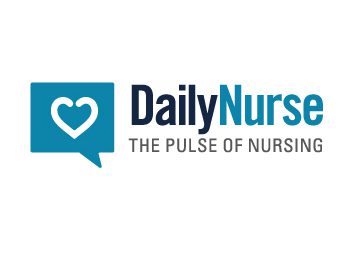![]()
This article is a part of your HHCN+ Membership
If there were ever a time for Medicare Advantage-related troubles to cool off in the home health care space, now would be it. And, heading into the summer, some of the largest home health providers in the country are scoring demonstrable wins that could lead to future success.
Virtually no one has the MA game figured out entirely, and it’s hard to imagine a day where that even becomes achievable. But there are certainly signs that the worst just may be behind providers, at least in a good portion of U.S. counties.
For one, MA plans are not in a strong financial position currently, at least for the most part. Providers are in a better position than they were three to five years ago to persuade the plans to pay more fairly for services, even if plans are less well off.
In value-based care, and in work with managed care companies in general, success begets success. Home health providers now can show their work, to one plan after another.
Instead of a woe-is-me approach, the largest providers – like The Pennant Group (Nasdaq: PNTG), Enhabit Inc. (NYSE: EHAB) and Aveanna Inc. (Nasdaq: AVAH) – are taking a more hard-lined approach.
That’s not possible for every provider, for certain. But the public companies are contributing to a new tone setting: pay fairly, or else.
“I think the payers are recognizing that this is not a commodity business, that there is a real need to partner with high-quality providers in the communities,” Pennant CEO Brent Guerisoli said Wednesday. “That’s also why these discussions have gone favorably for us, because they recognize the value of [partnering with] a quality provider.”
The latest slate of earnings calls and investor presentations from home-based care’s publicly traded providers came with a few key learnings, mostly centered around MA.
Those learnings are the topic of this week’s members-only, exclusive HHCN+ Update.
MA penetration
A better MA landscape may not just be driven by providers taking a more hard-lined approach in negotiations.
In fact, Addus HomeCare Corp. (Nasdaq: ADUS) CEO Dirk Allison said during the company’s first-quarter earnings call earlier this month that there may be a “leveling off” when it comes to MA penetration.
For the first time ever, in 2023, there were more Medicare beneficiaries under an MA plan than traditional Medicare.
That penetration occurred rapidly, according to data from Kaiser Family Foundation. For instance, in 2023, about 51% of beneficiaries were enrolled in MA. Just five years earlier, only 37% of beneficiaries were enrolled in MA.
“We continue to be affected by the movement of Medicare beneficiaries from Medicare fee-for-service to Medicare Advantage, but we feel we may be seeing a leveling off of this shift in the markets we currently serve,” Allison said. “We are continuing to work with our Medicare Advantage payers to obtain higher rates.”
The rapid penetration that took place from 2013 to 2023 led to the assumption that MA plans would continue to gain market share, and quickly. But that doesn’t seem like a sure thing anymore.
Now that the Centers for Medicare & Medicaid Services (CMS) has pulled back on MA rates, plans have less of an ability to expand and offer supplemental benefits that differentiate them from traditional Medicare.
For two years in a row, CMS has finalized unsatisfactory – from the MA plan perspective – payment rates. In 2025, plans will see a 0.16% decrease to core payments.
“As we think about the decisions for ‘25 bids, we do intend to exit some counties,” Humana Inc. (NYSE: HUM) CFO Susan Diamond said earlier this week. “When we thought about the framework of how we make those decisions, a primary input was the profitability of the plan.”
Humana CEO Bruce Broussard also added that supplemental benefits would be “less and less offered” moving forward.
So, in addition to exiting some markets, Humana – along with other insurers – are opting for profitability over growth. That could mean less stark penetration in the coming years for MA.
That would be a positive trend for home health providers. Although traditional Medicare payment is being cut, it still pays far better compared to MA plans.
MA isn’t going away, and will be a larger part of home health business for the foreseeable future. But providers are still making adjustments to account for that. If the firehose is turned down – even for a year or two – it would be of benefit.
Positive steps with plans
Over the last few years especially, providers have been constructing strategies to deal with MA penetration.
Those strategies are finally being implemented, and even if they’re still in their infancy, they’re certainly better than grasping onto what’s left of fee-for-service Medicare business.
Outside of home health care, Addus is also toying with a value-based care strategy that includes more personal care for MA beneficiaries.
“[We have] a small contract, and instead of gain-share, we’re taking some risk,” Allison said Wednesday. “Now, it’s very minimal. We’re only taking risk for our part, for our hours. We wanted to — I won’t say experiment — but we wanted to enter into a contract with a payer that we could partner together to determine if adding personal care hours can help reduce overall medical loss ratio for their patient base. We’re excited about that. We’ve only been in it less than a few months.”
Data doesn’t always persuade lawmakers. Instead, stories do. That’s not as much the case with MA plans, where data remains king.
Providers have caught up there, too.
As Enhabit shifts its home health mix to include more – and better – MA contracts, it is championing its 30-day rehospitalization rate, which is 20.5% below industry average, according to the company.
The new face on the public market, BrightSpring Health Services (Nasdaq: BTSG), said on its first-quarter earnings call that its home health services were also helping drive hospitalizations down significantly.
“Our medication management program … has demonstrated a 73% reduction in hospitalizations when utilized together with our home health,” Jon Rousseau, president and CEO of BrightSpring, said during the company’s first-quarter earnings call earlier this month.
Pennant was ahead of the game in MA, having recognized the need to take on MA beneficiaries long before a crisis arose.
Now, it is in the position to tell plans to pay up. Pennant President and COO John J. Gochnour said Wednesday that the company had achieved per-visit pay bumps from MA plans over the last two years that were above any increases it saw over the previous ten years before that.
Specifically, those rates have climbed anywhere from 10% to 15%, according to Gochnour.
It’s tough to say that the tide is turning in the MA-home health provider relationship. Providers are still struggling mightily to deal with the landscape shift.
But in a generational war like this one, all battle victories are worth taking stock of.
“Because, in the end, they still save money, right?” Gochnour said. “Because we’re the lowest-cost setting. And they make the right investment, we reduce hospitalizations, we reduce the overall cost of the care, and it’s a win-win for both.”





